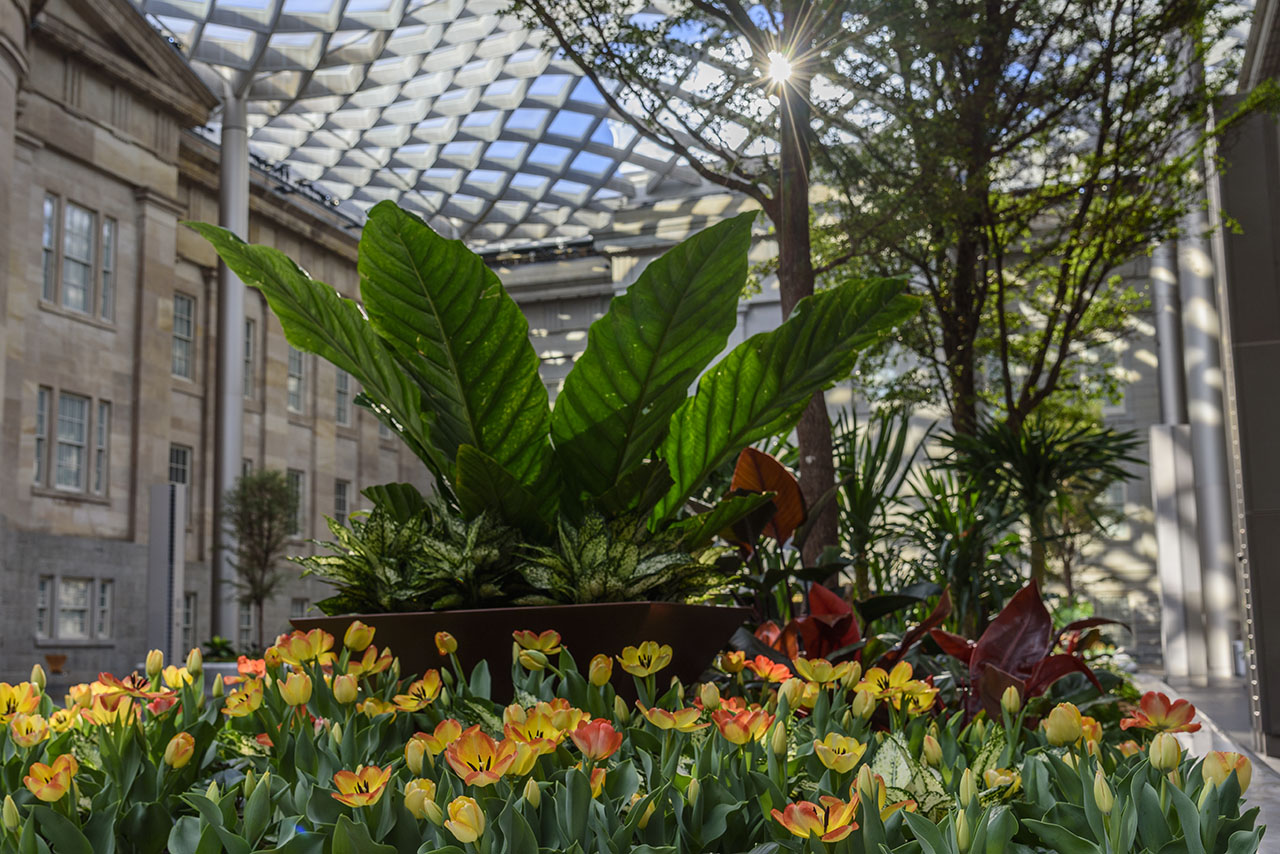
Understanding Plant Stress Signals: Abiotic Factors
Learn about the responses of plants to stresses in their environment including over or underwatering, nutrient deficiencies or toxicities, and extreme temperatures or lighting conditions. Smithsonian Gardens’ Horticulturists Virginia Thaxton and Debra Austin go over basic visual signals that plants show when they are under stress and discuss physiological causes and potential solutions.
Webinar Video
Useful websites and resources
- Nutrient Deficiency in Vegetable Plants
- Scouting for Nutrient Deficiencies
- Diagnosis Poor Plant Health
- Environmental Horticulture: Guide to Nutrient Management
Q & A
Q– Is it better to add fertilizer to house plants after you water or before you water? Or doesn’t it make a difference?
Assuming we are talking about a dry fertilizer, apply before watering and be sure to wash it completely off the foliage. It is best to apply dry fertilizer when the soil is still a little moist, not really dry.
Q– Should I only use collected rainwater? Or should I always use filtered tap water, instead of water straight from the tap?
If you can easily collect rainwater or can afford filtered water all the time, either option is going to benefit your plants. However, if tap water is all you have then that works too, even if sometimes you notice some leaves having burned tips (those can be trimmed with scissors). As long as watering is done correctly and other factors are optimal for your plant, then the plant should be healthy overall and some symptoms of fluoride accumulated in the leaves can be managed.
Q– I’ve read that you can use ice cubes to water plants that should not be over watered (like orchids). I’ve also read that such cold temperatures can shock plants; this is particularly a concern with delicate plants. What is your advice about this? Cold temperatures (air or water) are not good for many plants, particularly tropical plants like orchids, so we don’t recommend the use of ice cubes for watering.
Q–My cucumbers this year are pale yellow instead of green. What could be causing that?
Generally this is caused by too much water.
Q—What does the presence of liverworts covering a vegetable garden indicate?
Waterlogged, compacted or poor-draining soil. Not harmful themselves, except possibly smothering small seedlings, liverworts are an indication of over watering that should probably be addressed.
Q–Do you have tips or recommendations for using grow lights for houseplants?
Depending on the lamps you use, you’ll generally want to place them about 12” above the canopy and run them for 12 to 14 hours. If you use florescent bulbs look for “Full Spectrum”; for LED’s look for a mix of red and blue light.
Q–I live in an area that gets very cold in winter, but I only have containerized plants, mostly perennials. I am concerned about keeping them adequately protected during the winter. Would you advise covering them, wrapping the pots, etc. Are there “better” insulators to consider using?
If you can, move the containers into a garage or shed or up against the south or west sides of the house to get reflected heat. Other options include placing hay bales around the pots or using bubble wrap to insulate the container. Add mulch to the top of the containers and check the moisture of the soil once a month. If the soil is dry, water on a mild, sunny, above–freezing day. Covers can be used too, but if it is cold for many days and you need to leave the plants covered a while it is best to get cloth covers made especially for plants because they are lightweight and breathable.
Q– Should you fertilize your houseplants lightly during the wintertime?
Fertilizing houseplants in the wintertime is not necessary since they don’t tend to grow actively during that time of year. However, if you have plants that continue to put on some growth, maybe because of warm temperatures inside, you can use some diluted fertilizer (half the regular strength) to give them some food.
Q– For fertilizer, is it better to use liquid, dry (e.g. Espoma), or alternate between the two? Or does it depend on the stressor?
They all can be used effectively. if using a dry fertilizer, always apply to the soil, water thoroughly, and be sure to wash any residue off the leaves.
Q– What time of the day is best for watering?
Mornings are usually best. This ensures that plants have adequate moisture before it gets too hot and sunny and allows time for the leaves to dry before nightfall to help reduce any disease issues.
